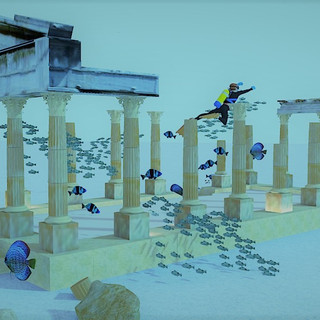Dive on an Underwater Art Gallery: Roman Style!
- Reef Life Dive Design
- May 26, 2017
- 2 min read
Updated: Aug 7, 2020
Check Out the NEW Architectural Dive Reef Designs from Reef Life
Island owners, resorts and dive tour operators have requested architectural design and casting experts from Reef Life to create customized Roman Ruins Architectural and Sculptural Dive Reefs.
The U.S. economy is very dependent on healthy coastal and ocean resources. Consider the following facts:
Fourteen percent of U.S. counties that are adjacent to the coast produce 45 percent of the nation's gross domestic product (GDP), with close to three million jobs (one in 45) directly dependent on the resources of the oceans and Great Lakes.
In 2014, the ocean economy, which includes six economic sectors that depend on the ocean and Great Lakes, contributed more than $352 billion to the U.S. GDP and supported 3.1 million jobs.
Tourism and recreation account for 72 percent of the ocean economy's total employment and 31 percent of its GDP. Offshore mineral extraction accounts for another 43 percent of the ocean economy's GDP.
Travel and tourism are worth over nine percent of global GDP and support over 100 million jobs—one of the world’s largest industries. Coastal tourism is one of the largest components of this industry. Coastal ecosystems generate clean, calm water, pristine beaches, superlative seafood and stunning vistas. Many visitors come for nature-based tourism, such as fishing, snorkeling on coral reefs, or whale-watching. Others come to enjoy the less-direct benefits of swimming in calm waters, or lying on white sandy beaches. By accurately differentiating and assessing the value of these benefits it will be far easier to encourage this industry to safeguard its own future, alongside building increased levels of protection for nature.
Additional oceanic and tourism research:







